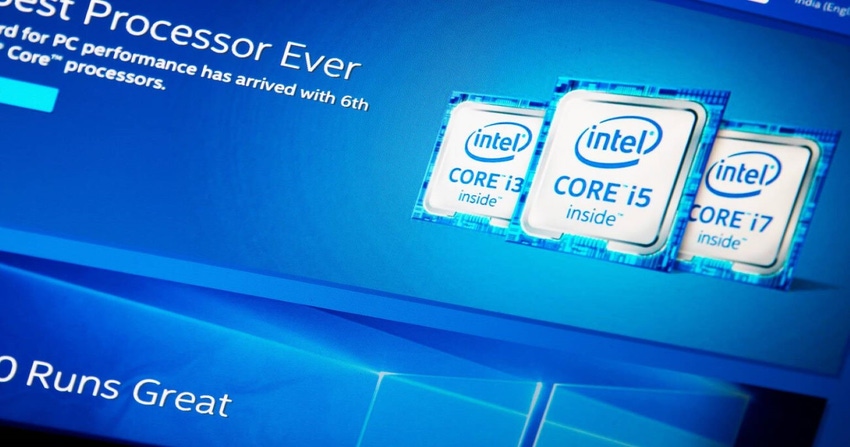Declining PC market weakens demand for processors and memory; near-term outlook uncertain.

Most electronics industry market studies rank Intel and Samsung as the two largest semiconductor suppliers in terms of revenue. Their business performance is often a telling barometer of the overall health of the semiconductor sector. The recently announced third-quarter results and near-term outlook for these companies hint that the good times electronics industry has seen in recent years are coming to an end.
Most electronics industry market studies rank Intel and Samsung as the two largest semiconductor suppliers in terms of revenue. Their business performance is often a telling barometer of the overall health of the semiconductor sector. The recently announced third-quarter results and near-term outlook for these companies hint that the good times electronics industry has seen in recent years are coming to an end.
In the case of Intel, the signs have been there in recent months. Intel floundered in the second quarter, and its third-quarter performance provided few signs of encouragement. The company posted third-quarter earnings $2.4 billion of 59 cents per share on sales of $15.3 billion, compared with earnings of $6.8 billion or $1.59 per share on sales of $19.2 billion in the year-ago quarter. Gross margin was 45.9%
In recent weeks, analysts speculated that Intel would have a weak quarter, and hinted of potential cost-cutting actions including layoffs. While nothing has happened yet, the company’s third-quarter performance, and comments from CEO Pat Gelsinger, all but confirmed that layoffs are likely to happen.
Intel stated in its earnings release it would aim to achieve $3 billion in cost reductions in 2023,and achieve $8 to 10 billion in annualized cost reductions by the end of 2025. During a conference call with analysts, Intel CEO Pat Gelsinger said the cost-cutting actions would involve headcount reductions, but declined to give further details.
Revenues fell year over year in Intel’s two largest businesses, Client Computing and Datacenter and AI, due to declining demand for PCs. The company’s Network and Edge Group and Accelerated Computing Systems and Graphics Group posted small increases, while Mobileye, the autonomous vehicle technology company Intel acquired in 2017, saw revenues jump 38% year-over-year. Intel recently staged an IPO for Mobileye, which is expected to infuse the company with a little bit of cash.
Gelsinger said during the analysts’ conference call Intel was increasing emphasis on using internal foundries, as part of its IDM 2.0 strategy. Gelsinger believes the internal foundry strategy, in part spurred on a renewed emphasis on onshoring manufacturing and government incentives, will help the company achieve some of its cost efficiency initiatives and allows business units to be more agile.
Intel’s near-term forecast can best be described as flat. For the fourth quarter, Intel forecasts earnings of 20 cents per share on sales of $14 to $15 billion. The company’s full-year 2022 guidance now calls for total revenue of $63 to $64 billion.
Poor Memory Market
Intel’s Korean rival, Samsung, reported earlier in the week that its third-quarter operating profit was 10.85 trillion Korean won ($7.7 billion), down 23% from the previous quarter, which missed analysts’ estimates. Samsung attributed the weak earnings to bulging inventories and declining demand for its memory products, both NAND and DRAM, which stem from lagging demand for PCs and servers.
Samsung also noted that its System LSI Business saw lower profits due to weak demand for mobile phones and TVs, while the company’s Foundry Business posted a record quarterly revenue on improving yields in advanced nodes.
Samsung said in its earning statement it would try to address the weakness in the memory market by focusing on high-density and high-performance products. For DRAM, Samsung will expand cutting-edge node migration for server products, and also prepare 16Gb-based products to cope with demand for high-density products of 64GB and higher. For NAND, Samsung will focus high-performance and high-density products while also capitalizing on NAND’s high price elasticity to unlock new demand.
In its earnings statement, Samsung acknowledged that geopolitical uncertainties are likely to dampen demand in the first half, but expects demand may recover later in 2023, driven by resumed installations of data centers and the adoption of DDR5 for new CPUs. The company said it would focus its production efforts on meeting the rising demand for new interfaces, including DDR5 and LPDDR5/x, and for high-density products. The company added it expects to deliver annual growth due to second half contributions from mass production for new customer orders and continued strength in high performance computing, datacenter, and automotive applications.
Spencer Chin is a Senior Editor for Design News covering the electronics beat. He has many years of experience covering developments in components, semiconductors, subsystems, power, and other facets of electronics from both a business/supply-chain and technology perspective. He can be reached at [email protected].
About the Author(s)
You May Also Like





